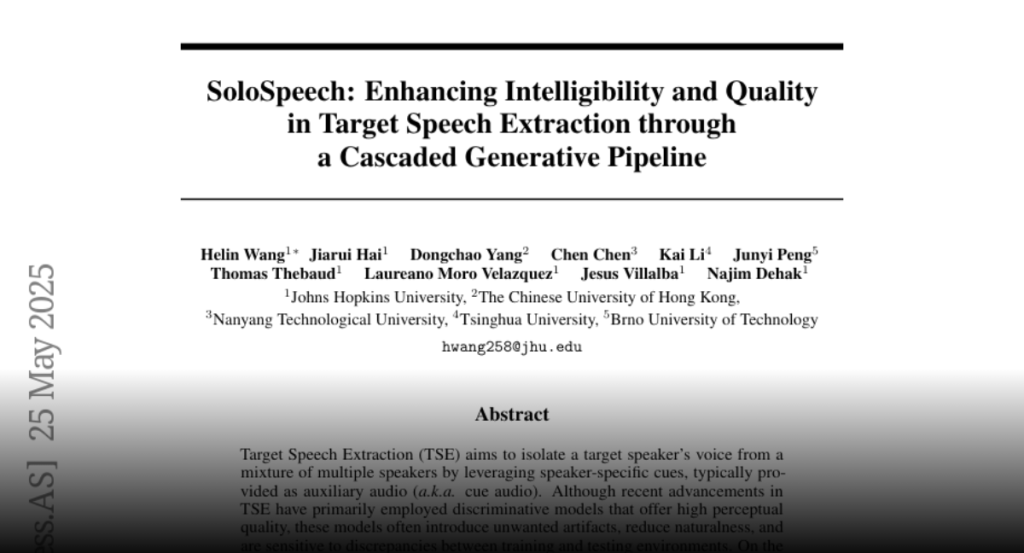SoloSpeech, a cascaded generative pipeline, improves target speech extraction and speech separation by addressing artifact introduction, naturalness reduction, and environment mismatches, achieving state-of-the-art intelligibility and quality.
Target Speech Extraction (TSE) aims to isolate a target speaker’s voice from
a mixture of multiple speakers by leveraging speaker-specific cues, typically
provided as auxiliary audio (a.k.a. cue audio). Although recent advancements in
TSE have primarily employed discriminative models that offer high perceptual
quality, these models often introduce unwanted artifacts, reduce naturalness,
and are sensitive to discrepancies between training and testing environments.
On the other hand, generative models for TSE lag in perceptual quality and
intelligibility. To address these challenges, we present SoloSpeech, a novel
cascaded generative pipeline that integrates compression, extraction,
reconstruction, and correction processes. SoloSpeech features a
speaker-embedding-free target extractor that utilizes conditional information
from the cue audio’s latent space, aligning it with the mixture audio’s latent
space to prevent mismatches. Evaluated on the widely-used Libri2Mix dataset,
SoloSpeech achieves the new state-of-the-art intelligibility and quality in
target speech extraction and speech separation tasks while demonstrating
exceptional generalization on out-of-domain data and real-world scenarios.

